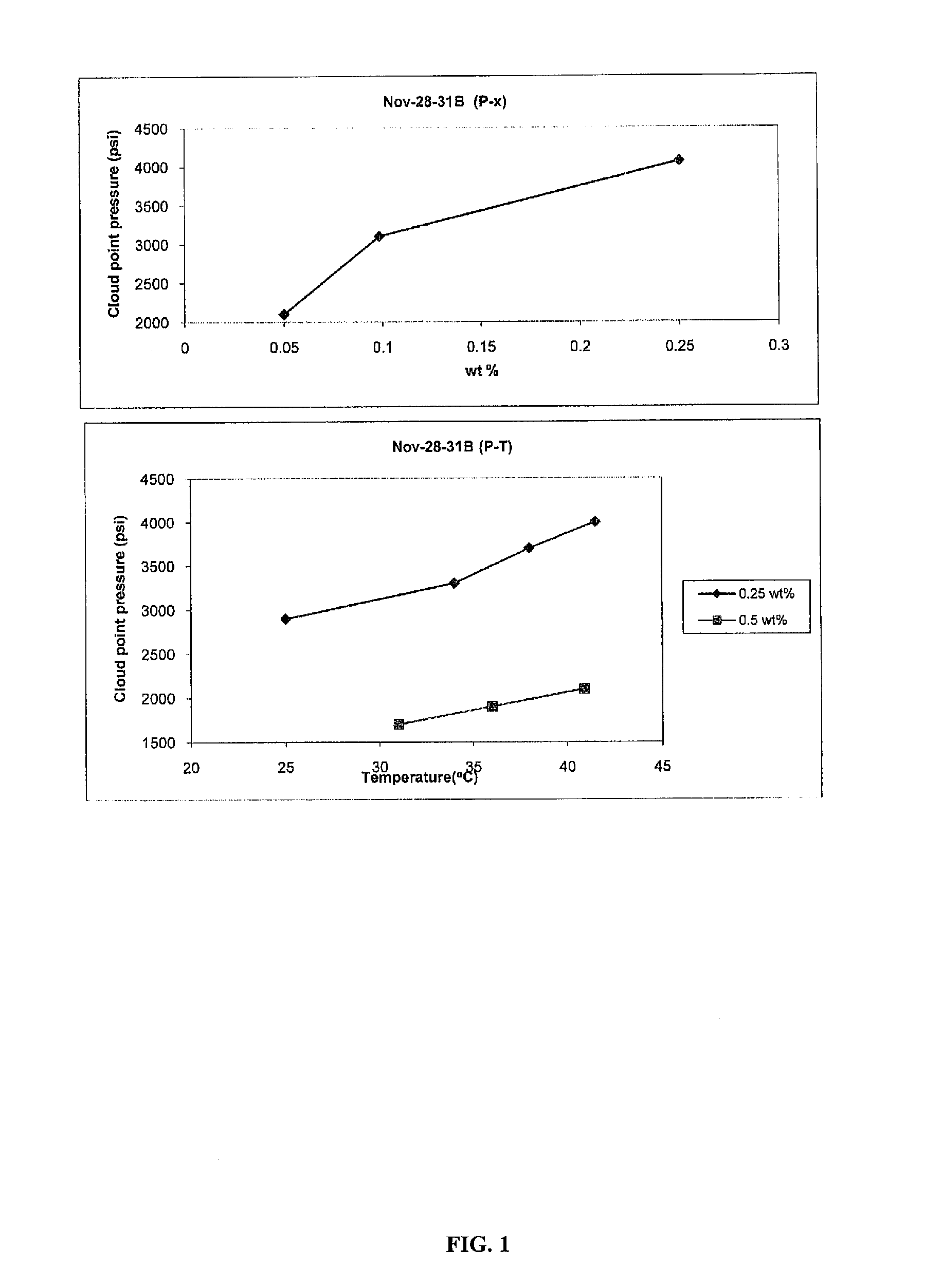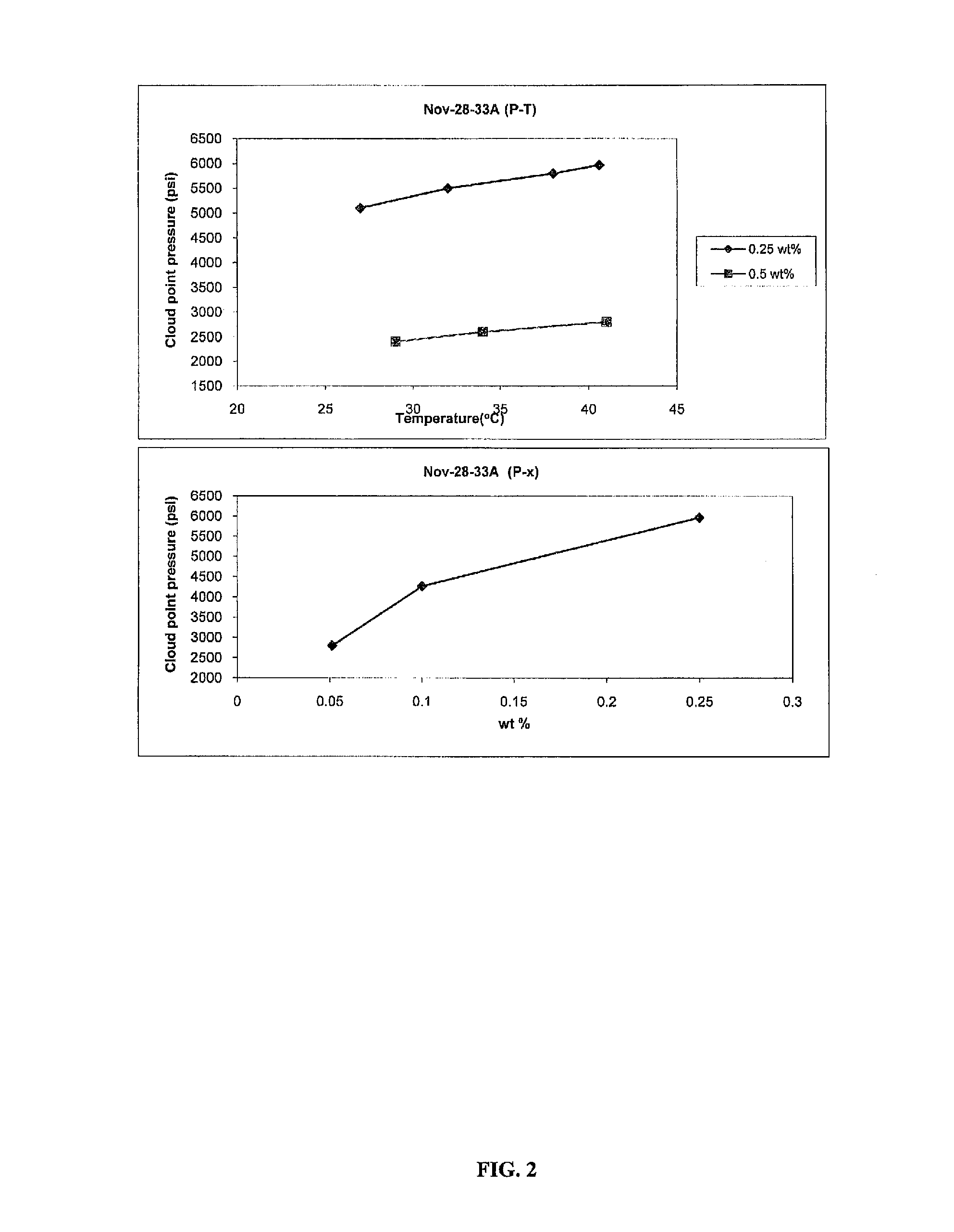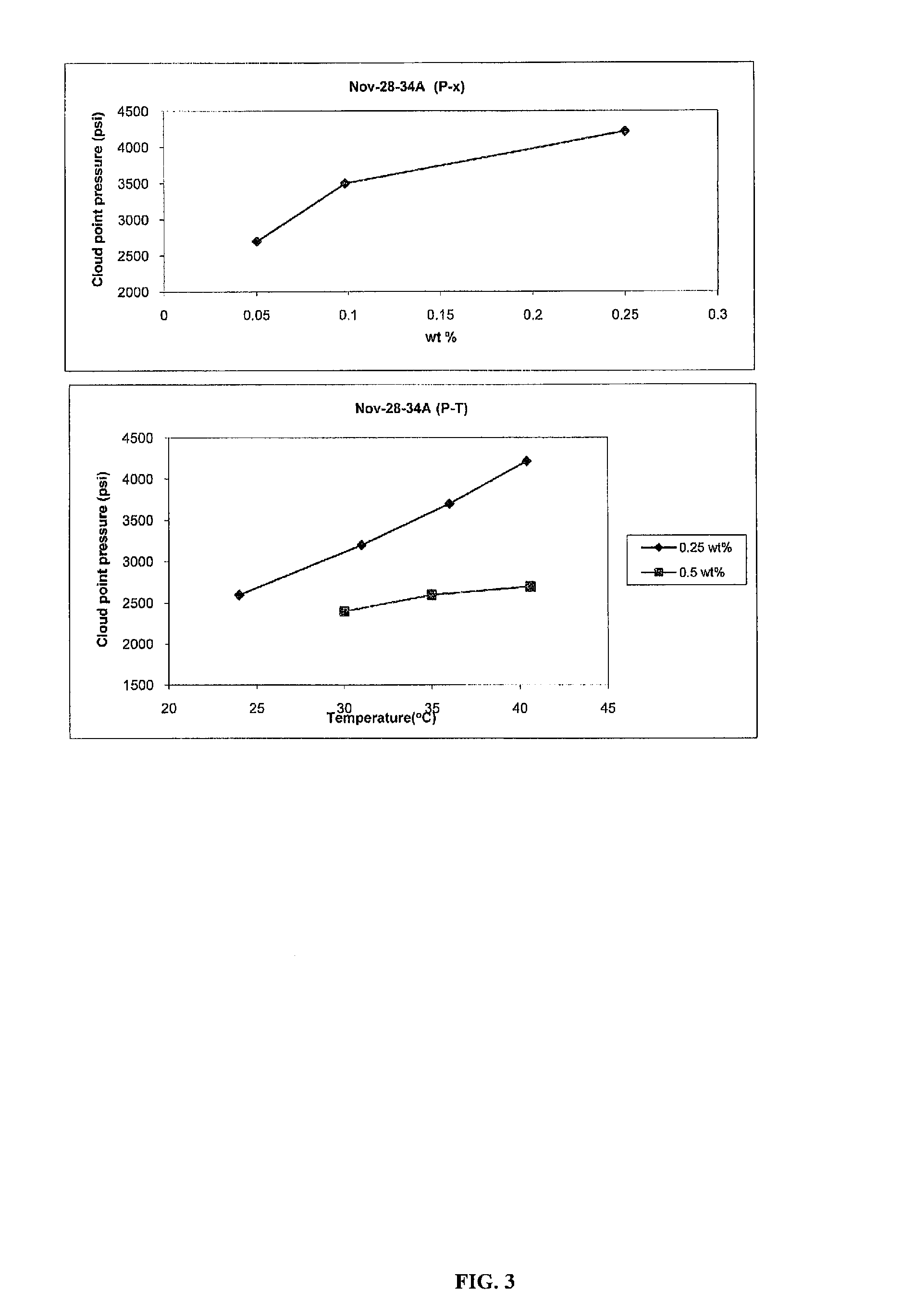Polycarbonate block copolymers
a technology of polycarbonate block and copolymer, which is applied in the direction of sealing/packing, bulk chemical production, borehole/well accessories, etc., can solve the problems of inability to efficiently recover petroleum from the formation, inability to achieve success, and inability to find much practical utility of materials
- Summary
- Abstract
- Description
- Claims
- Application Information
AI Technical Summary
Benefits of technology
Problems solved by technology
Method used
Image
Examples
example 1
Synthesis of Poly(propylene carbonate)-block-poly(ethylene glycol) methyl ether 1
[0267]
(a compound of formula II-d wherein X′ is OH, R100 is —CH3, L is a bond, and Z is —CH2CH2— and Y′ is CH3 with n being approximately 11 and m being approximately 11)
[0268]Procedure A:
[0269]A 3 oz. Fischer-Porter bottle was fitted with a pressure head and magnetic stirrer. The reaction vessel was dried in vacuo using a heat gun and cooled to rt. catalyst C-I (24 mg, 3.6×10−5 mol) and bis(triphenylphosphine)iminium chloride (21 mg, 3.6×10−5 mol) were charged to the reaction vessel. The vessel was evacuated for 15 min, then backfilled with nitrogen. This procedure was repeated twice more. While under the positive flow of nitrogen, propylene oxide (20 mL, 0.29 mol) and poly(ethylene glycol) methyl ether (Mn=550 g / mol, 2.2 mL, 7.1×10−3 mol) were charged to the reaction vessel. The reaction was placed into a 30° C. water bath, stirred, and pressurized with carbon dioxide (100 psi).
[0270]After 21.5 h the ...
example 2
Synthesis of Poly(propylene carbonate)-block-poly(propylene glycol)monobutyl ether (2)
[0275]
(a compound of formula II-d wherein X′ is OH, R100 is —CH3, L is a bond, and Z is —CH(CH3)CH2— and Y′ is n-butyl with n being approximately 5 and m being approximately 19)
[0276]Procedure A for 1 was followed except poly(propylene glycol) monobutyl ether (Mn=340 g / mol, 2.4 mL, 7.1×10−3 mol) was used as a chain transfer agent. This produced 1.6 g (7% yield) of a yellow viscous polymer (Mw=2,258 g / mol, Mw / Mn=1.08; Tg=−47° C.; Td(onset)=229° C., containing 15% propylene carbonate).
example 3
Synthesis of poly(propylene carbonate)-block-poly(ethylene glycol)-block-poly(propylene carbonate) (3)
[0277][0278](compounds of formula X-b where R100 is methyl).
[0279]A 300 mL stainless steel reactor was dried, in vacuo, using a hot plate (120° C.) and cooled to rt. Catalyst C-I (182 mg, 2.7×10−4 mol) and Bis(triphenylphosphine)iminium chloride (154 mg, 2.7×10−4 mol) were charged to the reaction vessel. The vessel was evacuated for 15 min, then backfilled with nitrogen. This procedure was repeated twice more. While under the positive flow of nitrogen, propylene oxide (150 mL, 2.2 mol) and poly(ethylene glycol) (Mn=400 g / mol, 9.5 mL, 2.7×10−2 mol) were charged to the reaction vessel. The reaction was pressurized to 300 psi of carbon dioxide and heated to 30° C. using a heating mantle.
[0280]At 2, 4, 6, and 8 h, 10 mL samples were removed from the reaction and quenched with a methanolic solution (3 mL) of tosic acid (7 mg, 3.9×10−5 mol). After 26 h the reaction was vented and quenched...
PUM
| Property | Measurement | Unit |
|---|---|---|
| pressure | aaaaa | aaaaa |
| pressure | aaaaa | aaaaa |
| pressure | aaaaa | aaaaa |
Abstract
Description
Claims
Application Information
 Login to View More
Login to View More - R&D
- Intellectual Property
- Life Sciences
- Materials
- Tech Scout
- Unparalleled Data Quality
- Higher Quality Content
- 60% Fewer Hallucinations
Browse by: Latest US Patents, China's latest patents, Technical Efficacy Thesaurus, Application Domain, Technology Topic, Popular Technical Reports.
© 2025 PatSnap. All rights reserved.Legal|Privacy policy|Modern Slavery Act Transparency Statement|Sitemap|About US| Contact US: help@patsnap.com



